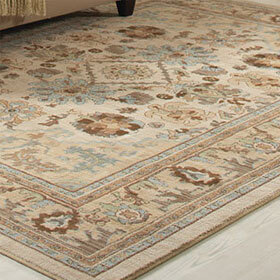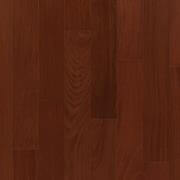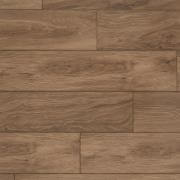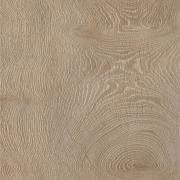Different Types Of Tile Flooring

Tile is one of the most popular and most durable types of flooring around — both practical and gorgeous. It’s most often recommended for kitchens, and of course bathrooms. But tile flooring is also great for entry ways, laundry rooms, and basements. These days larger 1-foot squares are the popular, but mosaic tiles (around 1 inch) are still often the choice for smaller rooms. With several types of tile flooring, each in a huge variety of options for a seemingly endless number of possibilities, many people wonder how to choose what’s right for them. So here’s a summary of the key types of floor tile with the pros and cons of each.
Types of Tile Flooring
The three main types of tile flooring are ceramic, porcelain, and stone tiles. While many types of tile can be used on floors as well as walls and back splashes, some such as vitreous (glass tiles) aren’t suitable flooring options. Additionally, tile flooring is specially textured to keep them from being too slippery. Here are some things you need to know before choosing your floor tile.
Ceramic Tile Versus Porcelain Tile
One of the most common questions we get are about the differences between porcelain tile and ceramic tile.
- Ceramic tiles are made form kiln-fired clay. The most affordable and easiest to install, they’ve been around for centuries and have been the most popular for generations. You’ll find ceramic tiles in a huge variety of colors, patterns, shapes, and sizes. Their key disadvantages are that they’re not as resistant to impact as other types of tile flooring and colors differ slightly from batch to batch.
- Porcelain tiles are also made of fired clay, but with a mixture of about 50% dust-like feldspar crystals. During firing the feldspar melts and bonds everything tightly together. That makes porcelain tiles stronger. They’re also denser, less porous, and more stain- and impact-resistant. That strength also means that larger sizes are possible, up to a pretty amazing 2 by 4 feet. They’re ideal for high-traffic areas and your choices include the look of wood and natural stone as well as pebbles and stones. Unfortunately they’re harder to install and significantly more expensive.
Both types can come as non-glazed or glazed tiles, but non-glazed tile (sometimes called quarry tiles, but not to be confused with natural stone tiles) are rarely used indoors as they’re porous and readily absorb water.
Natural Stone Tile
Natural stone tiles are treasured for their unique looks, bringing a bit of the outdoors indoors. The can also be about as durable and long-lasting as flooring can get with few disadvantages other than cost. Here you also have lots of options.
- Granite resists scratching and is suitable for heavy foot-traffic areas. It’s also a bit more resistant to acids (such as vinegar and certain cleansers) than other natural stone, but still needs to be re-sealed from time to time.
- Limestone is harder than marble and can be used for a kitchen floor, but it’s better for low-traffic areas. Its unique rich and natural appearance is sometimes likened to wood.
- Marble is about as elegant and formal as it gets. But more porous so it’s not recommended for kitchen floors unless it’s regularly re-sealed.
- Slate has its own widely-recognized natural texturing. It’s also dense and durable, making it ideal for high-traffic areas.
- Travertine is a special type of limestone that forms in hot springs, giving it a distinctive appearance. Unfortunately it’s a bit more easily scratched and stained than other options.
Other types of natural stone tile include onyx and sandstone.
What’s Best?
We hope this has given you some useful information on how to choose the right type of flooring for your home or business given the many tile flooring options. The most important criteria are, quite simply, the look and style you’re after. So give that some thought, and visualize the room with a few different options.
There’s also some very objective factors: cost and durability. Considering only that, tile flooring scores second only to vinyl flooring. As for the “best” floor tile, ceramic tile is the most economical but porcelain is more durable and more stain resistant. Although very long-lasting )and to many the most attractive) natural stone is more expensive and requires sealing at various intervals to maintain it’s quality appearance. (https://www.consumerreports.org/cro/news/2015/01/the-best-tile…floors…/index.htm)











